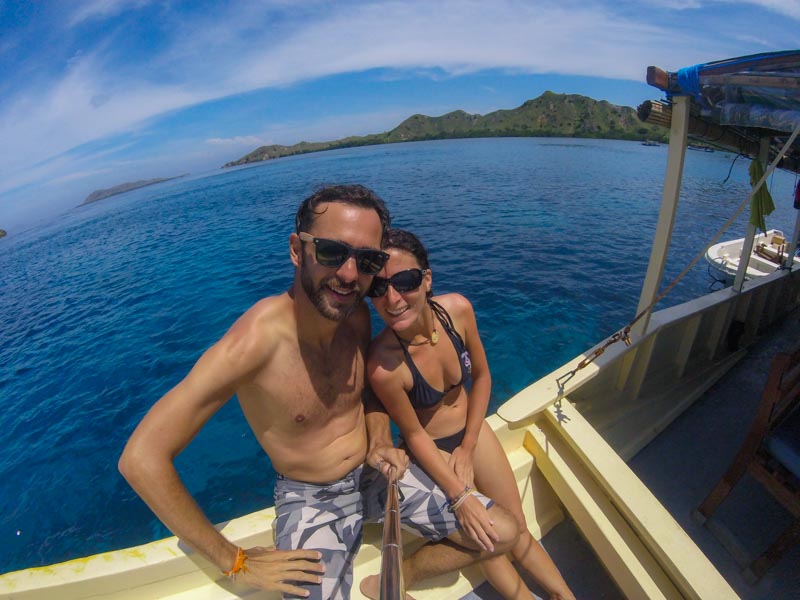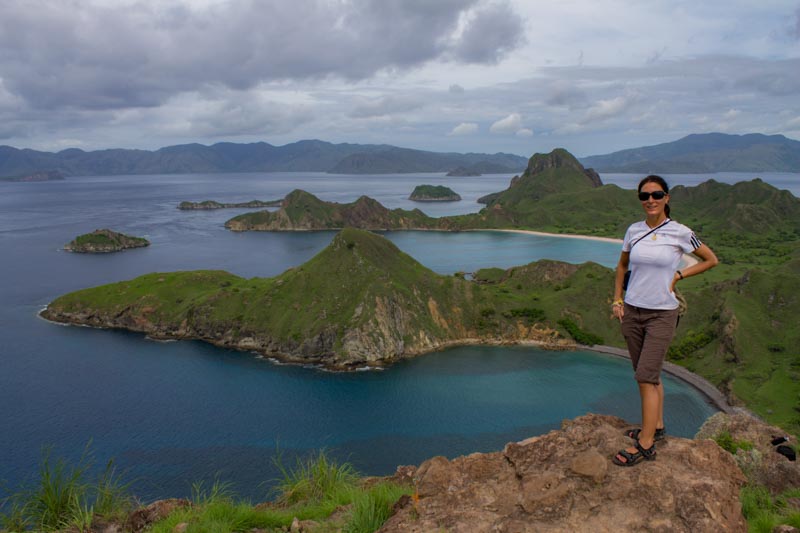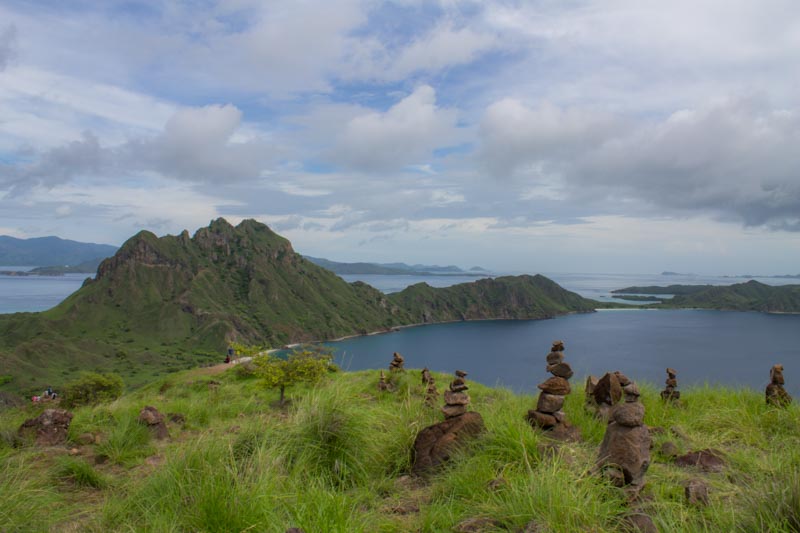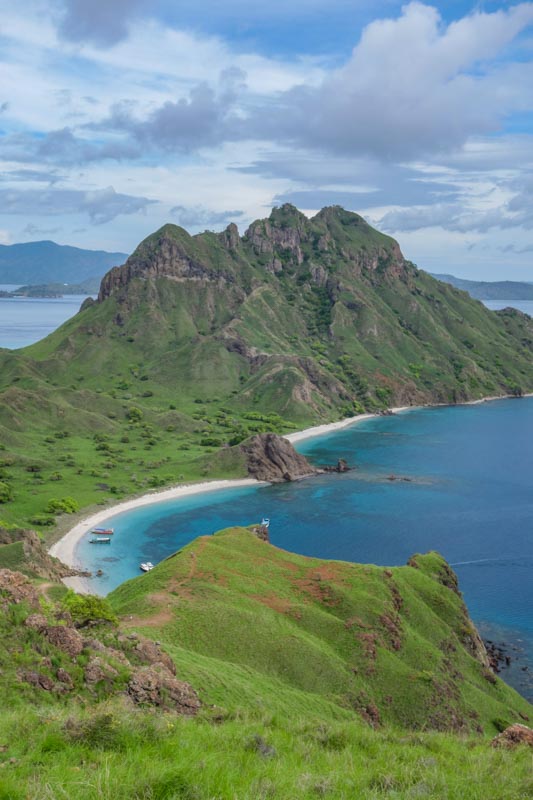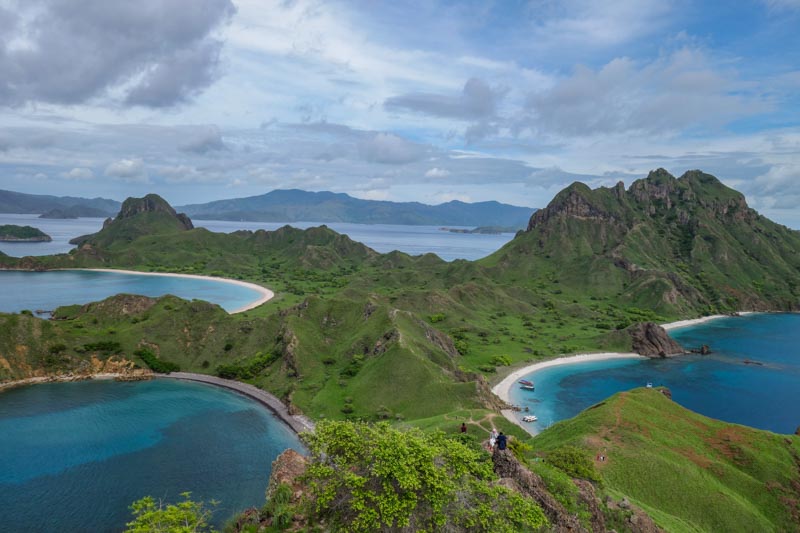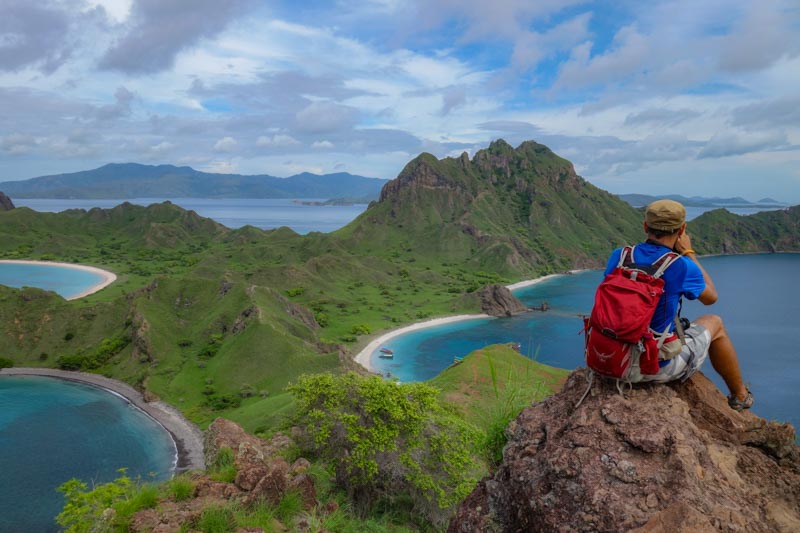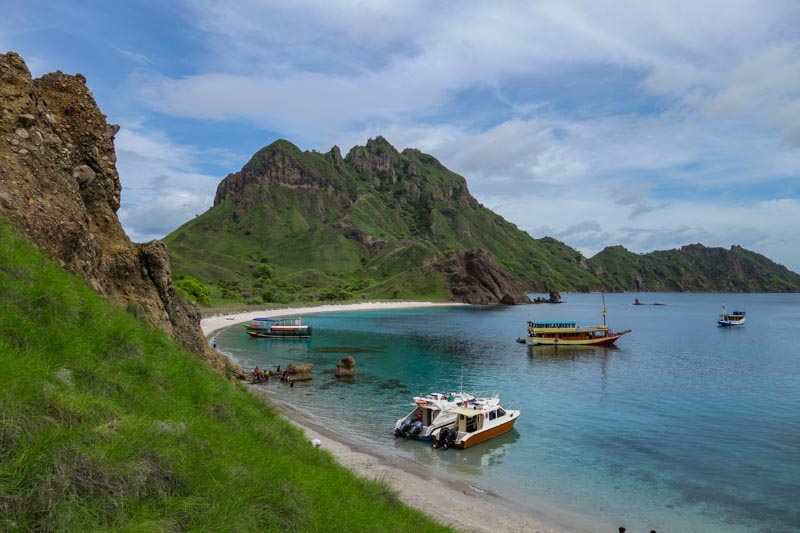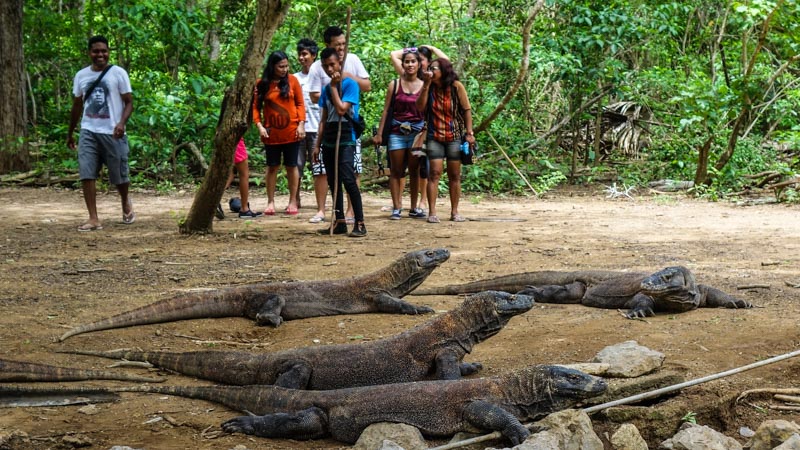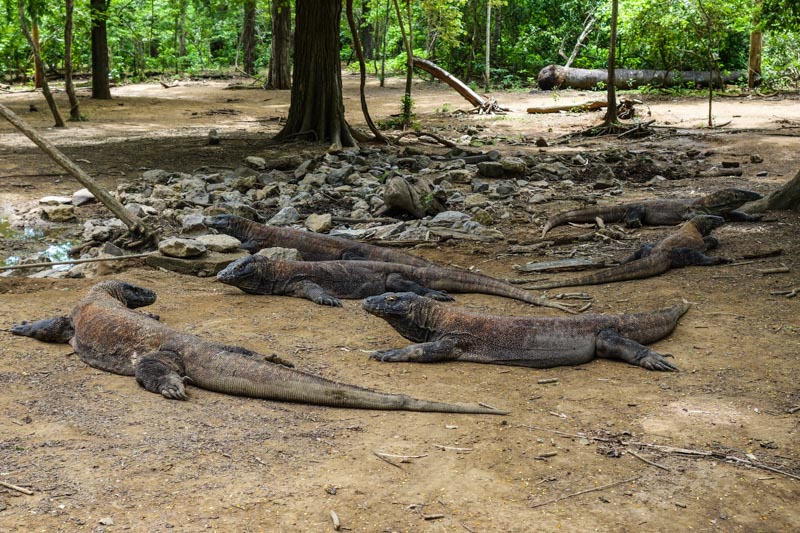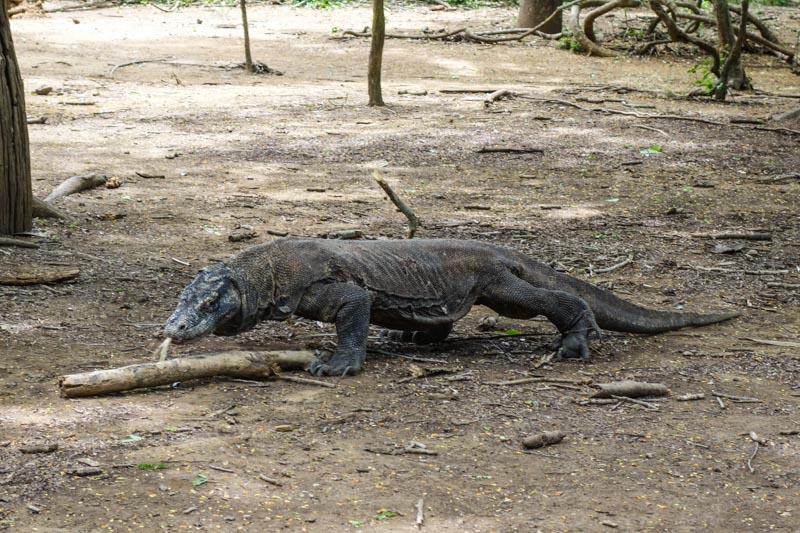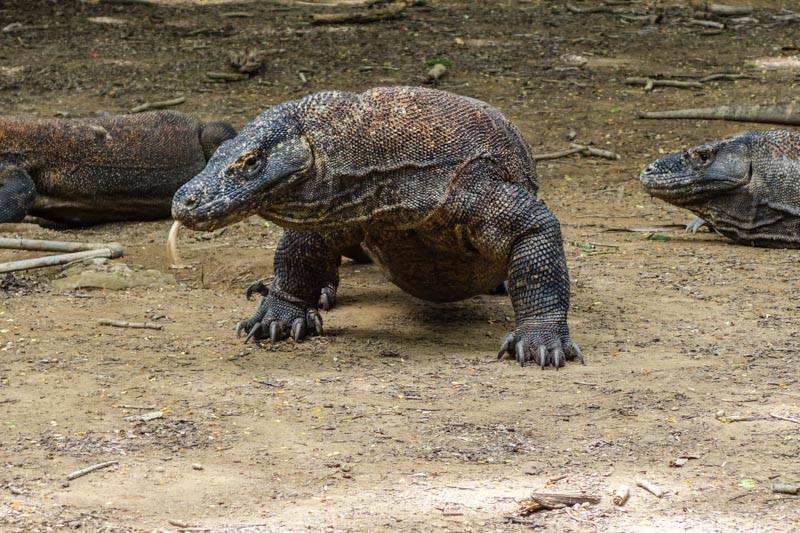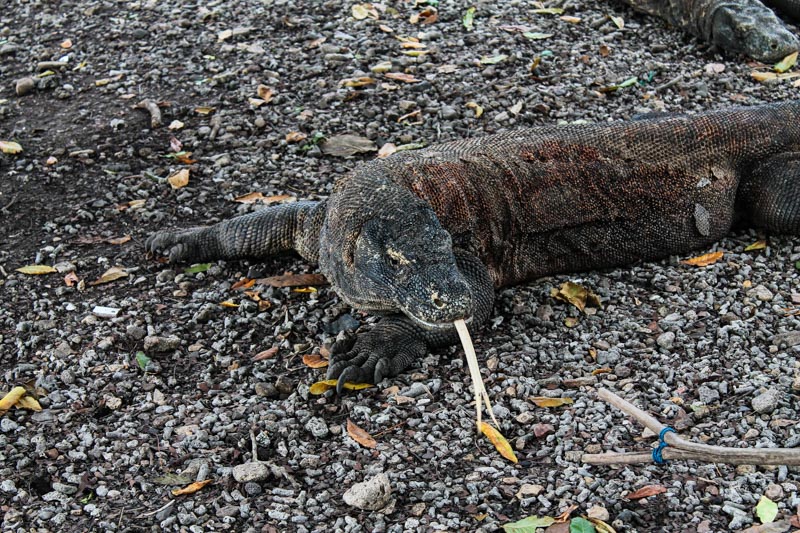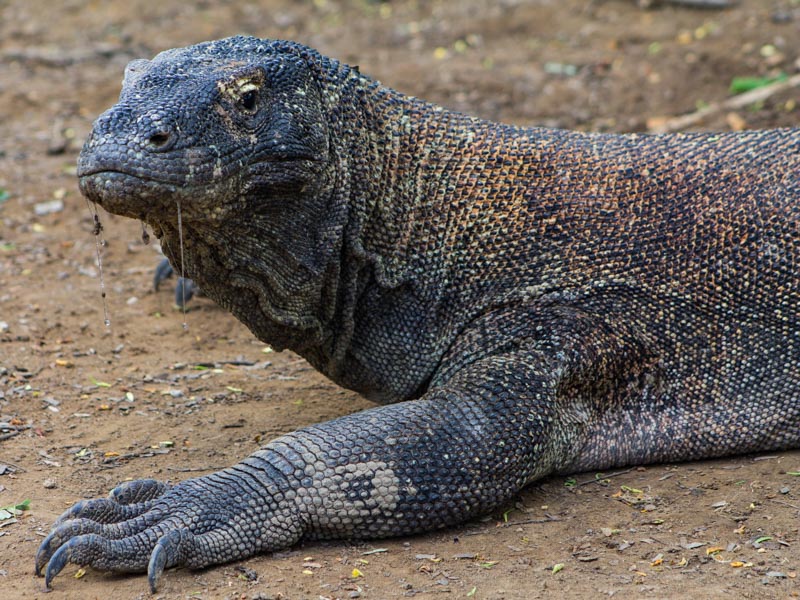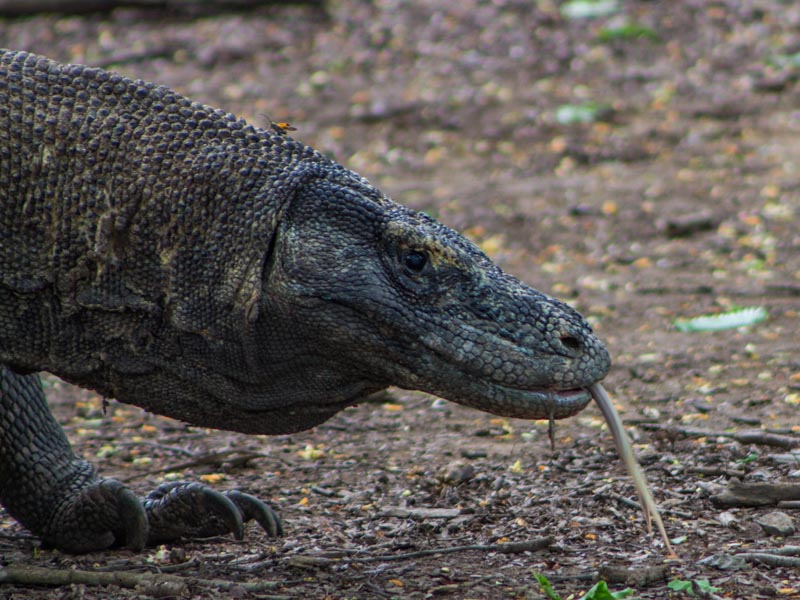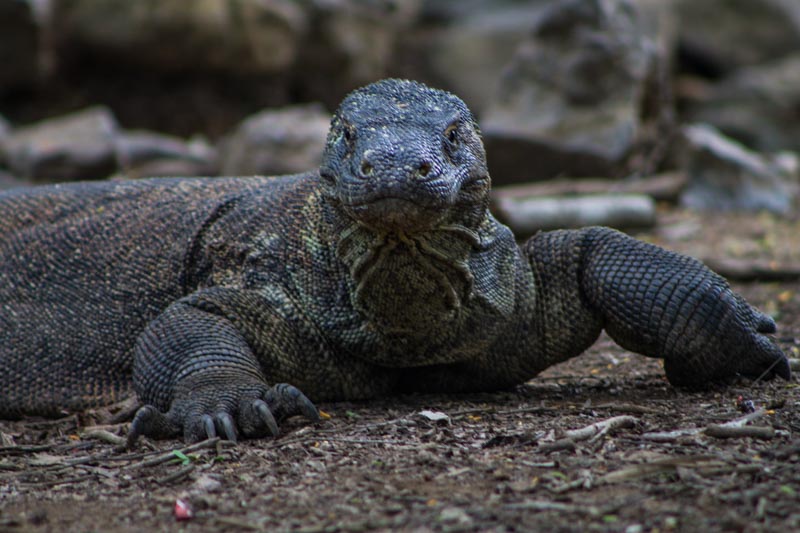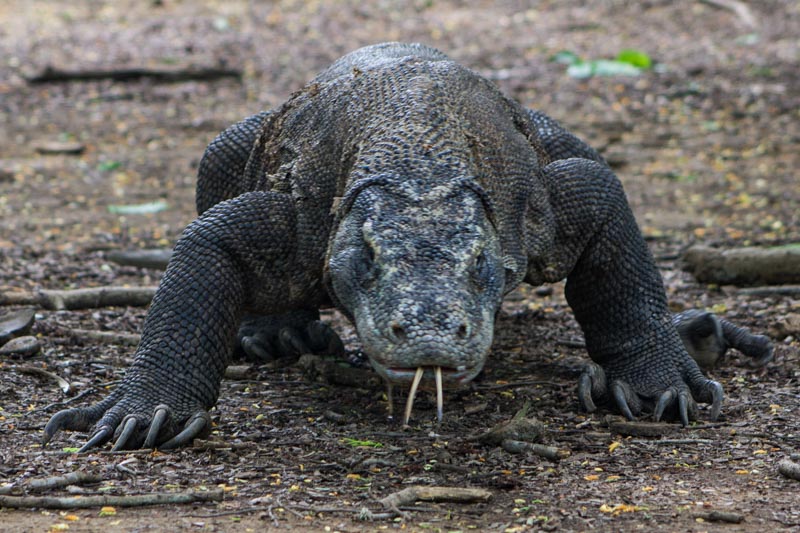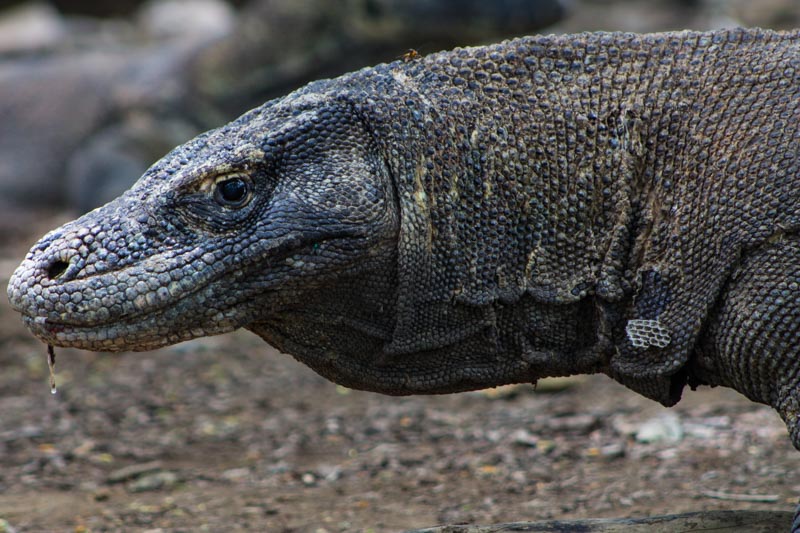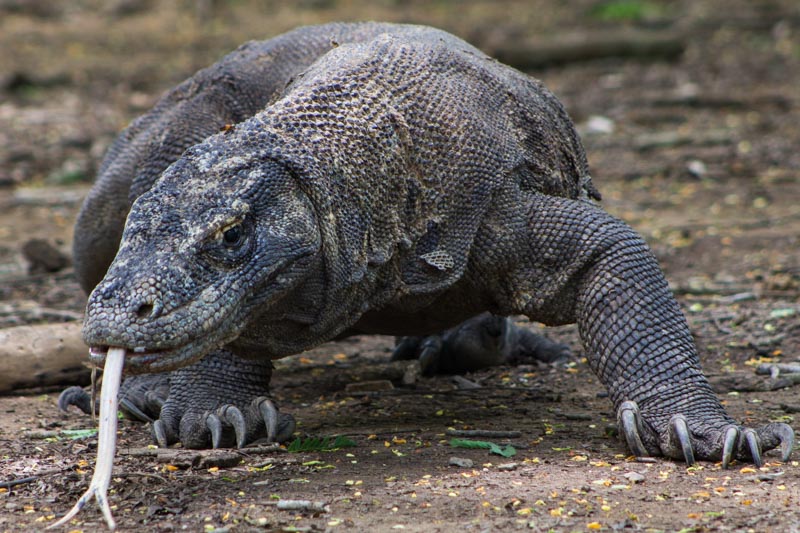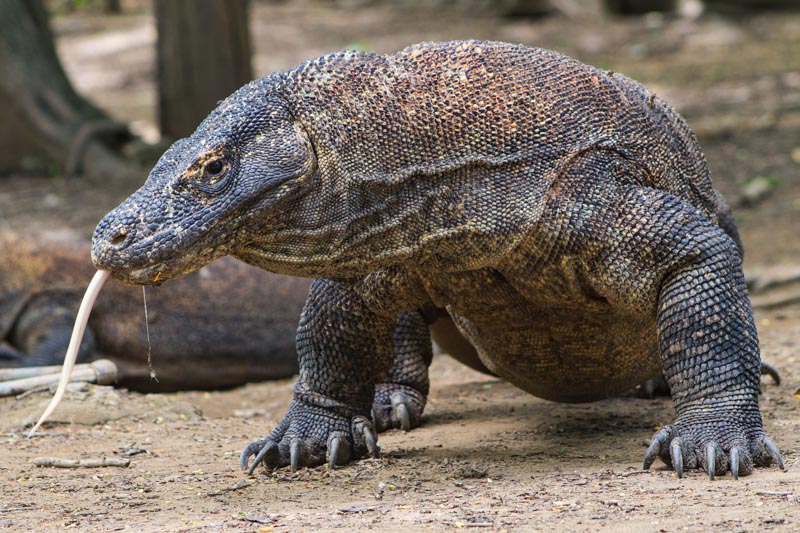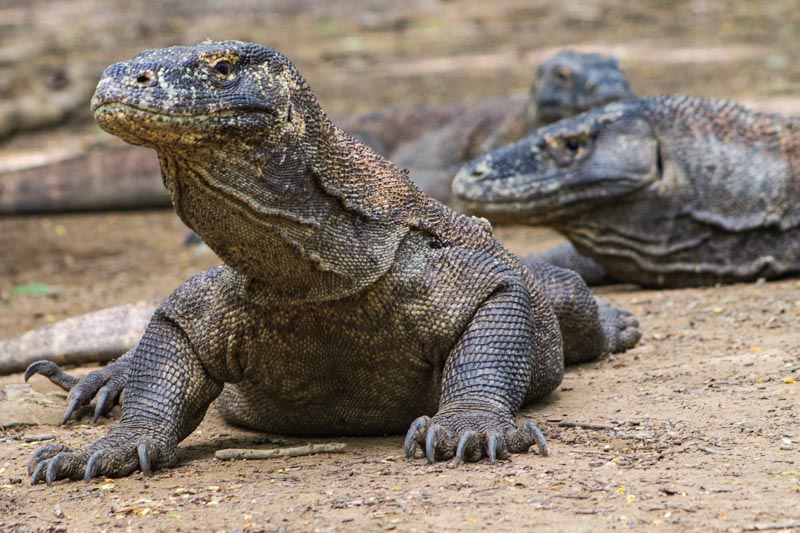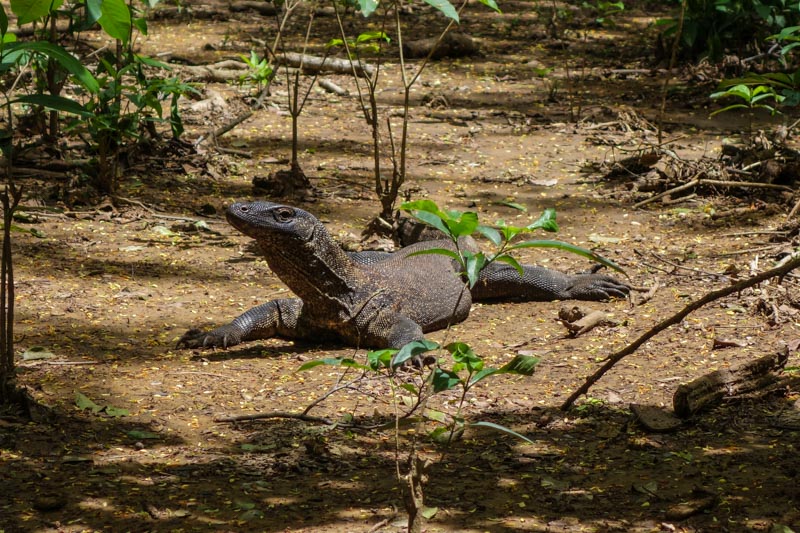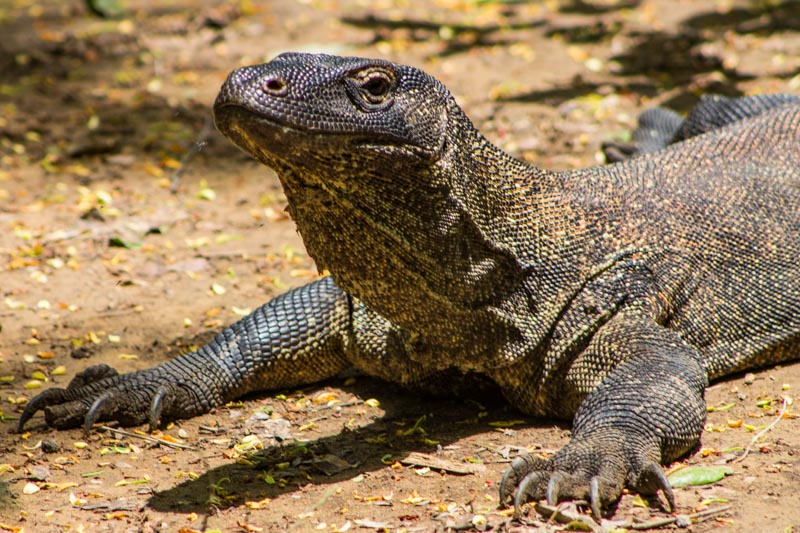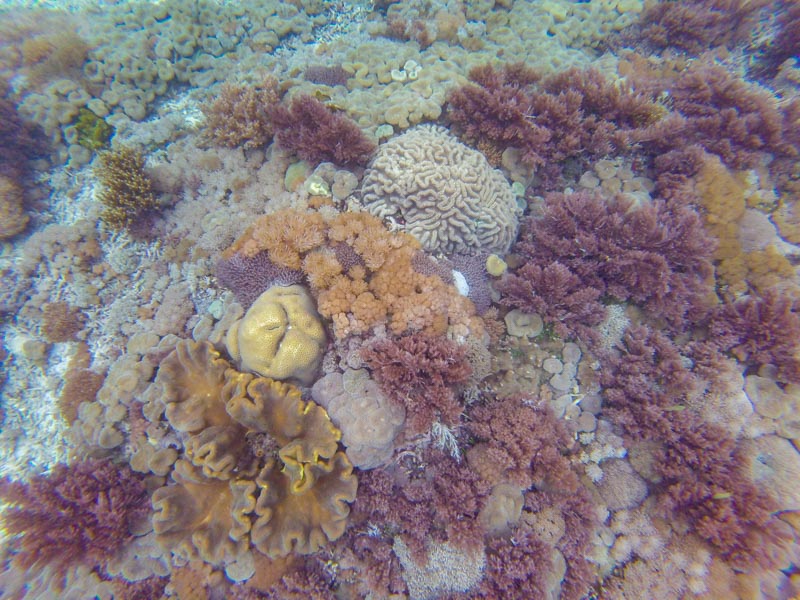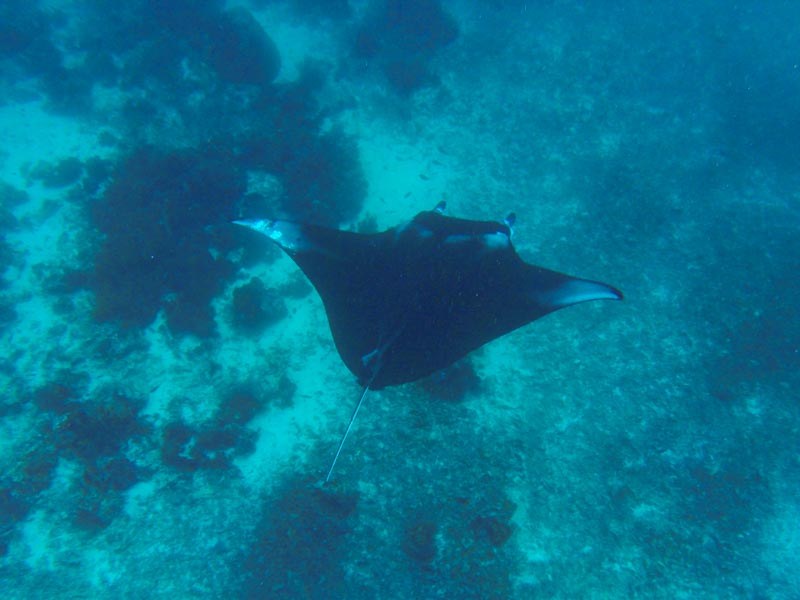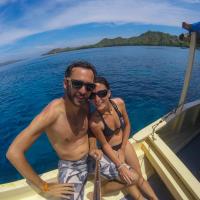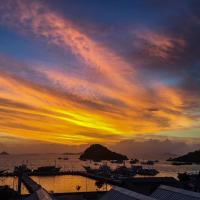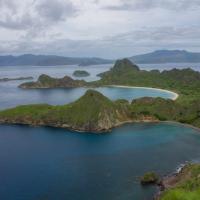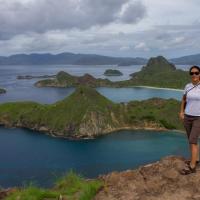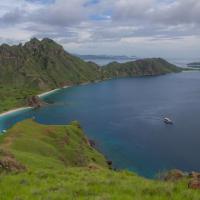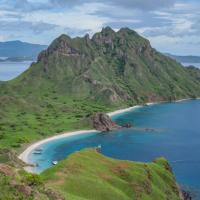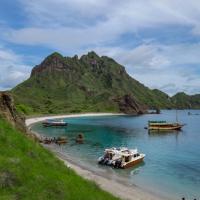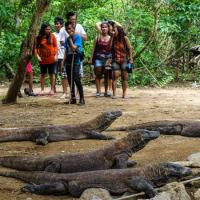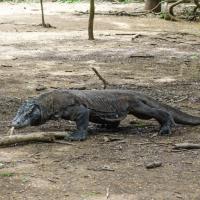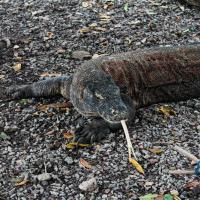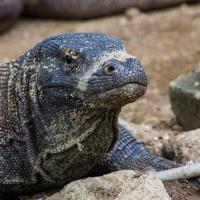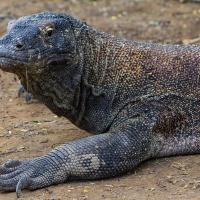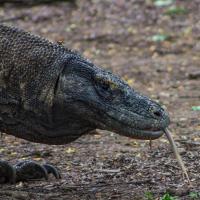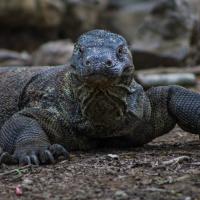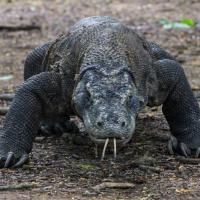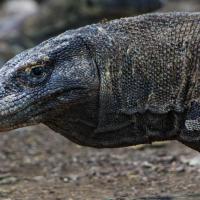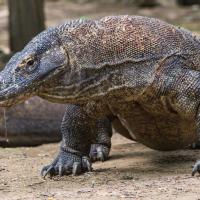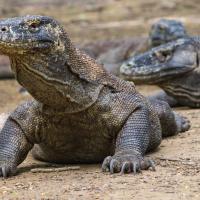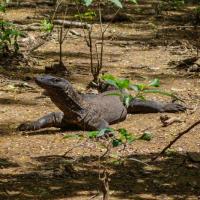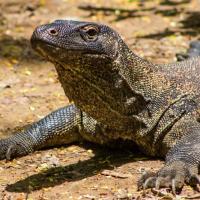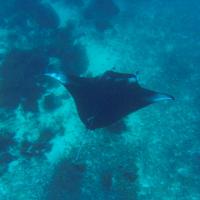Getting up at 3:45 on the 25th of December is generally not too fun, but we are on vacation and were excited to see a bit of Indonesia. Our Thai Air Asia flight was on time and went very smoothly so we arrived in Denpasar as scheduled. We had allowed plenty of time for immigration, which went super fast, and to make our way to the domestic terminal to catch our flight with Garuda to Labuan Bajo, the main city on the western tip of the island of Flores, the main gateway to famous Komodo National Park.
That flight was quite smooth as well and we arrived in the late afternoon at the tiny, but brandnew airport in Labuan Bajo. As we were on the island between Christmas and over New Year we had prebooked accomodation and spent the first 4 nights in a cheaper hotel a bit outside the center, a rough 20min walk across the hill (good excercise every day). That first evening we did not do too much, just had a quick walk around the city center and crashed into a cute and excellent Italian restaurant for dinner. As Labuan Bajo is a massive diving place, a lot of Western restaurants are around, but we were also able to find some good-value local food.
On the 26th of December we had a lazy morning and went to town again around 11:00am to do all the paperwork with our dive shop. We had booked a 3 days package including 3 dives a day with Uber Scuba, founded by Dutch people, and we had only read good things about them. Even though there are a lot of professional and good dive shops in town (Blue Marlin, etc.) there are as well some dogy operators around and we can absolutely recommend Uber Scuba in any way. From e-mail contact, quality of infomation, booking process, the office works and the diving experience itself (the instructors, the equipment, the crew, the boat) everybody was super friendly and uncomplicated, yet highly professional. We did not regret our choice and would definitely go with Uber Scuba again.
On the 27th of December the boat was only half full with divers and snorkellers because many people were still in Christmas celebration mood :). We had to be at the dive shop at 7:00am (and those who know Moni know she's not a morning person!) and waited for the crew and other divers to arrive. Whilst we expected to carry our equipment to the boat ourselfs, the amazing crew had already taken care of everything and we just needed to follow our dive guides to the boat where a donut-and-fruit breakfast was waiting for us. That day we were in a group with two Americans and our dive guide was Nic, a very nice French guy who was working as a freelancer for Uber Scuba. Onboard was as well Martin, a crazy and hyper-active British dive instructor (like Hammy the squirrel in 'Over the hedges') who was just making stupid jokes and basically entertaining the boat for 3 days! They gave us a basic introduction to the boat and the various procedures during the day and repeated some general diving safety rules.
Komodo National Park is strategically well situated in between the Pacific Ocean in the north-east and the Indian Ocean in the south-west. As the difference in tides between these two oceans is 30m (!!!) the immense water masses moving around in between the two oceans create some incredible currents around the Komodo Islands. This means that the biodiversity in the water is huge as there is lots of food around for the big stuff, but it also makes the waters some of the most challenging in - let's be modest and say Indonesia - because the currents can be either very subtle or drag you up and down and forward and backwards in the water, you will have to kick hard to fight them and we experienced both options on one and the same dive sites on two different days.
The crew was, however, very professional and repeated every day and with every briefing for every dive site over and over again that currents can occur at any time and that people should be careful and stay behind their dive guides to watch their behaviour to not get washed away by an unexpected current.
Until the 25th December early afternoon the weather in Labuan Bajo was apparently horrible with lots of rain, but we were extremely lucky - after all it was rainy season in Indonesia and we had hesitated for quite a while whether or not we should really go to Komodo or elsewhere where it was dry season (like the Malukkas or West Papua). Thank God at the end we decided for Komodo because what we experienced under water during these 3 days simply blew our minds!
With sunshine and calm waters we arrived at our first dive site for the day, Sabayor Kecil, an easy start for everyone. Moni was a bit worried at the beginning because she had only 4 dives logged (the dives from making her certificate) and as Komodo is usually challenging she feared that the instructors would not take her (and subsequently Alex as her buddy) to the good sites because of her beginners' level. However, the whole crew was quite relaxed and it turned out Moni was able to keep her buoyance better and manage her breathing better than some of the advanced open water guys (she was soooo proud) so after the first dive she relaxed significantly and managed all other dives like a pro ;).
The second dive site of that day turned out to be one of our favourite ones: Batu Bolong, a massive rock that was diverting a current left and right of it and we were diving just behind the rock in a supposedly protected area even though they warned us that sometimes the currents can be smashed back and pushing us against the reef/rock.
We went into the water and already by looking down from the surface we knew that this would be an amazing dive as we had a good 30m visibility. And we tell you: Batu Bolong was like a huge aquarium, we were swimming amidst swarms of differnt types of fish, we saw corals in all colours (bright red, yellow, purple, blue,...). It was a joy to see such a healthy environment and we were just stunned by the tons of fish in different sizes and colours: from trumpetfish, box fish, puffer fish, barracudas, wrasses, lion fish, scorpion fish, giant morrays, reef tip sharks, a massive tuna (actually looking quite scary), turtles and and and... I tell you: if it was possible to open your mouth under water we would have been diving with our jaws dropped for 3 entire days!!!
Usually our dives took around 50-60mins, obviously depending on the maximum depth and until the first in the group of 4 reached 50bar in his/her oxygen cylinder. Even if this happened too fast to one of us, our dive guides would usually make sure the rest of the group could stay down with another instructor and thus, we both never spent below 50min under water (even though it felt like 20min only).
After the second dive we would usually have a freshly cooked lunch on the boat and then head to our third dive site. Oh and we should not forget to mention the once again hillarious crew that was always setting up our equipment after each dive so that we literally did not have anything else to do than get into our gear. Sometimes they would even put on our fins for us and as soon as we came back from a dive they would help us get aboard and remove our equipment. A big thank you to these guys who made the process of getting in and out of the water even faster for all of us!
The third dive site for the day was Tatawa Besar and it was great again, even though after the aquarium of Batu Bolong our memories of the other sites start to fade a bit, but all of them were worthwile spending time there!!!
On the way back to the harbour of Labuan Bajo we relaxed on the sundeck of the boat, fell asleep and got some good 'colour'. We got off the boat, said good-bye to our fellow divers and headed for a nice and... cold shower :). Then we went for dinner to town and fell into our beds happily and very tired.
The next day same procedure: at 7:00am at the dive shop and off to the boat soon after. On day 2 we were diving with Matt, a French cutie and Claudio, a very nice Italian guy and our dive guide was Ollie, a cute local Rasta man (from a girl point of view :) ) who was letting us know before and after each dive that it was actually winter and the water was super cold (the ocean had 27 degrees) when he was sitting next to the boat engine shivering and trying to warm up :).
Dive site number 1 that day was Siaba Besar where we did a bit of macro diving at the beginning. As nice as it is to see some of the smaller stuff around the sea (nudibranches, shrimps, etc.) we do prefer to see the big stuff and were rewarded with endless turtles feeding on the corals afterwards. It is just always a pleasure to see a turtle (and we saw one that was a good 1,2m big) swimming around elegantly, up and down, and the visibility was again amazing. Apart from the turtles many colourful fish and corals were around on top.
We happily got on the boat again, not knowing what dive site number 2 was holding for us! We cruised our way to Manta Point where the big mantas usually stopped at the so-called cleaning stations, usually a pile of stones or corals hosting types of fish that are eating off all the parasites from the manta's skin. Our crew told us that is likely that we see some mantas, but not guaranteed. It sometimes happened that divers dived at Manta Point 3 days in a row and only one group would see a single manta, so we crossed our fingers and descended into the rather shallow water (10m).
Once arrived at the bottom Ollie signalled Moni to her right so she thought we are making our way right and was looking for her buddy Alex. In the meantime Ollie tried to catch her attention again and intensively pointed to her right. When she turned her head, she saw a massive manta just swimming straight up to her - onca again jaw-dropping. So she quickly moved of its way to admire the beauty and elegance of these big rays and we carried on. Just 'around the corner' we saw the next two more mantas and after 5min manta number 5 so we stopped counting and alltogether we must have seen around 25 mantas in around 60min. It was just incredible what kind of show they put on for us. Even the dive instructors were amazed by the number of rays we saw and assured us that this was absolutely exceptional.
The best spot we found was close to one of the manta cleaning stations. We were lucky and there was hardly any current so we deflated our BCDs and sank to the ground where we remained as silently as we could and watched mantas coming and going. We saw some that were around 4m wide and we were as well lucky to see one of the rare melanistic manta rays that supposedly only cruise the waters of Indonesia. Also known as 'Ninja mantas' they are entirely black whereas their relatives have a black back and a white belly. Mantas are as well very intelligent and curious creatures so we had some mantas approaching us up to 1m and then turning off and swimming in their full body lengths above our heads. This is probably one of the pictures that will stay in our minds and hearts forever because it is so unique and special. Unfortunately Moni's Go Pro can only go up to 5m deep, but like this we were able to enjoy the moment 100% instead of trying to take shots of the mantas.
Completely stunned we had to end our dive after around 60min and had time to chick-chat with all the others about our crazy experience down in the ocean. We just could not believe what we had just seen and were keen on seeing some more big fish :).
After lunch we headed to the last dive site, Pengah Besar, and while it started to rain we were happy to be under water and see again beautiful corals and tons of different fish in all forms and sizes. Tough nothing could beat Manta Point that day!!!!
After the boat had returned to the harbour we went for a sundowner on the roof top terrace of Le Pirate in Labuan Bajo with Matt. Beautiful colours, views of the sea and a nice cocktail - perfect :). Then once again we had dinner and headed back to our hotel as we were quite exhausted and had yet another diving day ahead of us.
Day 3 was the big current day, but we did not know that yet when we came to the dive shop in the morning. That last day, we were diving with Martin, the crazy squirrel, and in our group was once again Matt and Rebecca from Thailand. This day we repeated three of our dive sites, but it was not tragic at all because two of them were our favourite ones and for the other one we could take an 'alternative route'.
First stop was Sabayor Kecil like on day one, but whereas on day 1 we swam to the right side to descend via a sandy area on our last day we went to the left and were swimming along a sudden and massive wall of corals, once again full of fish. Rebecca unfortunately ran out of air way too quickly because she was so nervous, so our dive guide took her back up and we stayed down with Ollie and his group. That day we probably saw the biggest giant morray ever - it must have been a good 2m long - creepy and a bit scary creatures.
Dive site number two was once again Batu Bolong, the rock that split the currents. When we had been diving there two days earlier at roughly the same time the sea was calm and we barely felt any current under water. Not so this time! It turned out to be a bit of a messy dive as there were a few more boats around and the site itself is quite small so you bump into others quite easily. And then the currents came streaming back pushing us against the reef so we needed to be a lot more careful and focused on where we were swimming rather than staring at all the fish around.
And then even better, we saw our dive guide cross a small channel with an apparently heavy upwards current because he started to swim upside down to keep the depth. Rebecca went together with him and then Moni went in the upside-down-channel, unfortunately without checking on her buddy again. Alex was in the meantime struggling hard because of the currents and lost one of his fins (probably not tight enough), half a minute later the second one. As the current was pushing him to the surface he was afraid to go up to quickly (you know pressure and all this stuff) and grabbed onto the next person around, Matt. Both of them were then holding onto some corals to stabilize themselves. In the meantime on the other side of the channel the rest of the group had missed the loss of Alex' fins and we were wondering what fabulous creature they had found in the reef and were staring at for so long. It was only until another diver from yet another boat - who had watched the scene from the surface - grabbed Alex' fins and went down to help him put them back on that we realized what had happened. At the end nothing bad happened, no cutting from corals or similar, so we all laughed about it, but in the situation itself Alex was fairly stressed ( understandeably).
After lunch we went again to Manta Point, hoping to see some more rays. That day the visibility was a bit lower and the currents were as well stronger so we enjoyed a partly drift dive, partly fighting the current sideways. There were as well some impressive mantas around, but not in such huge numbers like the day before. We saw a couple thought plus some big lion fish and a turtle. Towards the last part of the dive, Alex realized he was reaching the safety limit of oxygen and signalled Moni that he had only 50bar left. We decided to let our dive guide know just when we bumped into a massive manta at a cleaning station a couple of meters away from us.
As the current was still strong our guide immediately hooked himself up to a coral next to the manta and each of us was grabbing his neighbour's BCD to float in a line just on eye level with the manta. It was crazy, that ray was slowly and elegantly moving in the current to keep his position while we would have been kicking like crazy to keep up :).
So we were hanging there for quite a while watching the manta and seeing the manta curiously watching us until our guide decided to carry on.
Alex had no chance to signal he was running low on air again because just around the corner a few reef sharks were swimming around. We even saw a bamboo shark and Martin hat a bottle wrapped in aluminium foil with him. The noise of scratching over the aluminium foil apparently produces the same noise that wounded fish make so we soon had around 6 black tip reef sharks circling around us! What a spectacle! This time Moni kept a close eye on her buddy and was ready to pull her alternate air source to share air with Alex, but he managed to end the dive with his own oxygen - 10 bar left :).
After these amazing 3 days diving the waters, we decided we still needed to see the National Park on land as we wanted to see the famous Komodo dragon, the largest lizard species on earth that is only living on 3 islands in the Komodo National Park. They can grow up to 3m in length (and up to 70 kg) and have a very nasty type of bacteria in their saliva and some poison on top. Komodo dragons "hunt" deer and even water bufallo and all they need to do is bite their prey once as the bacteria will cause the flesh to rotten and the victim will die. For animals like water buffalos it can take up to 5 days until they die and the dragon would just follow the wounded animal until its last breath. Once they have had a feast they digest for about a month before they go hunting again.
If you get biten by a dragon - bye bye! You will for sure die, there is no way or anti-venom to stop their poisonous saliva.
And yes, we still wanted to go see some of them in the wild :). There were basically two options for us to see the dragons: on Rinca Island, 2h from Labuan Bajo, there is a ranger station where the dragons usually get fed so you will for sure see some of those creatures. Or you can go on a tour to Komodo Island itself which is a 4h hours boat ride one way. There the dragons are not being fed and living completely in the wild so you might be able to see some, but it is not guaranteed. As we tend to prefer the more authentic stuff we decided for the "all or nothing" option and booked a trip to Komodo Island with stops at Pulau Padar beforehand and Pink Beach and Manta Point for snorkelling afterwards.
This meant however a very early start and we had to get up at 5:00 am to be at the harbour at 5:20 and the boat left at around 5:45 as soon as there was enough light. We were travelling on one of the local wooden nutshells with an engine, but we had asked for advice beforehand and got a recommendation for this agency. There were really many operators around and we had read some horror stories about lack of boat safety leading to accidents. Even on the dive boat we met an American who told us he went on a liveaboard for a couple of days to travel around the Komodo Islands. And on day 2 he woke up in the morning wondering where all that water in the room was coming from and went on deck to check. 10 minutes later the boat had sunk. He told us that he should have probably asked some very basic stuff like "do you have life vests on board?" (in his cas they had not), "do you have lights on board?" (in his cas they had not)' "do you have a radio on board?" (in his cas they had not),... Especially with all the currents around we were willing to pay a bit more and be safe.
We were on board with a nice American living in Japan, a Finnish guy, one Indonesian and his Vietnamese friend, a German couple and an elderly Hungarian couple. In the early morning the mood was not too chatty as everybody was a bit sleepy, but this changed during the day. Our first stop about 3 hours after we had left the harbour was Pulau Padar, an island where you can climb a tiny peak and enjoy spectacular views over the white sandy bays and surrounding islands. Even tough it was a bit cloudy that day (at least no pouring rain!) we were stunned by the panorama from the top! The viewpoint on Pulau Padar is by the way the picture you can see on our landing page at the moment.
Another hour by boat brought us to Komdo Island where we had to pay our entry fees and ranger fees, then headed out to the bush to look for the dragons. You have to be accompanied by a ranger from the station and cannot go by yourself - which you probably also don't want in view of these nasty creatures. The guide's only weapon was a long wooden stick with a fork at the end. Apparently the dragon's weakest point is its neck, so in case they want to keep a dragon away they fix his neck to the ground with the wooden fork. So let's just hope there is maximum one agressive dragon around and not two :).
We started walking and about 10-15 min from the ranger station there is a small natural waterhole where the dragons often tend to hang around. We were really lucky as that day there were 9 dragons lying around. We were able to take tons of good and even close-up shots of this lizard species, yet we kept a respectful distance as the very intense and frightening warning sound they made created goosebumps!
From the waterhole we continued on a small loop through the jungle, saw a juvenile dragon not far from the other nine and on the way back another two dragons next to the ranger's kitchen. One of the dragons was a good 3m long and its skin had a beautiful set of colours. On the way back to the ranger's station we passed an old and dying Komodo dragon. Our guide said when they become too old and weak to hunt they just ly down somewhere to die and then the other dragons would eat it. Nice, isn't it?
After this exciting experience with the wild Komodo dragons we hopped on the boat again and went to two snorkelling spots: Pink Beach, a beach with slightly pinkish sand and then - what else? - Manta Point. Even though we had already been there twice and seen tons of Manta's it was still nice to watch and follow the massive manta from the surface. We were lucky and found one and this time we could bring the Go Pro and take shots and videos of this gracious creature (check out the video!).
On the way back we were a bit sleepy and as it was quite a long day we just quickly went to the night market where the locals prepared fresh fish on the barbecue and went to bed straight away! By that time we had changed hotel and were located in a cute and tiny lodge in the center where they served breakfast to our terrace in the morning :).
The next day was New Year and we were quite lazy during the day, relaxing and working on the blog in a nice cafe in town. For the evening we had planned to go to a nice Italian restaurant and then join Nick, our dive guide from day 1, and his friends on a bar tour.
Unfortunately, Moni got a bit sick after the excellent dinner, so she spent the New Year's celebration in bed, but luckily the next day she was fine again. Alex had a few drinks with the others and saw some of the fireworks around. That was how we experienced the end of 2016 and beginning of 2017.
The next day was again a travel day as we were leaving the island of Flores and flying back to Bali with the intention of going to Lombok from there. Our next article will tell you everything you need to know about Lombok, so stay with us ;).
Let us know what is happening on the other side of the planet.
Take care and talk to you soon,
Moni & Alex

